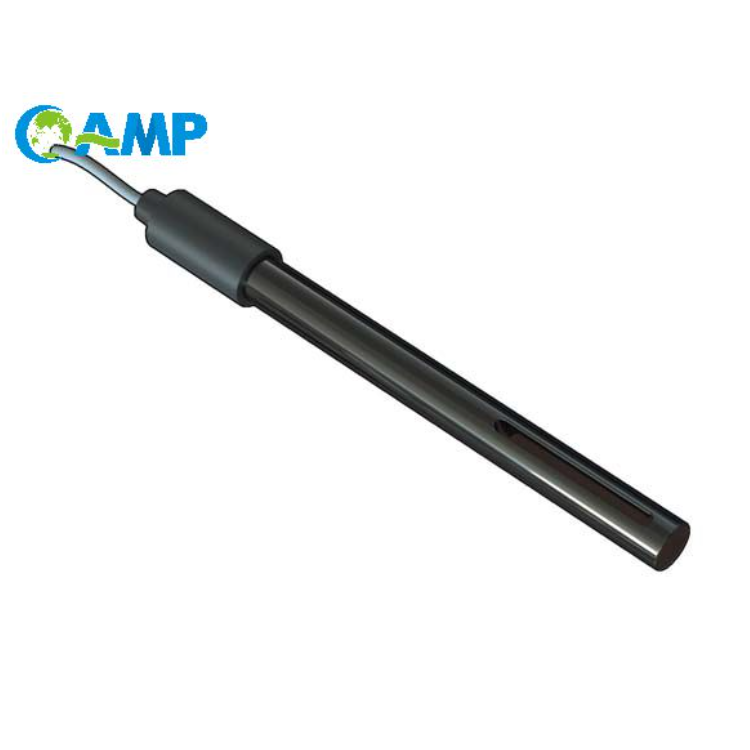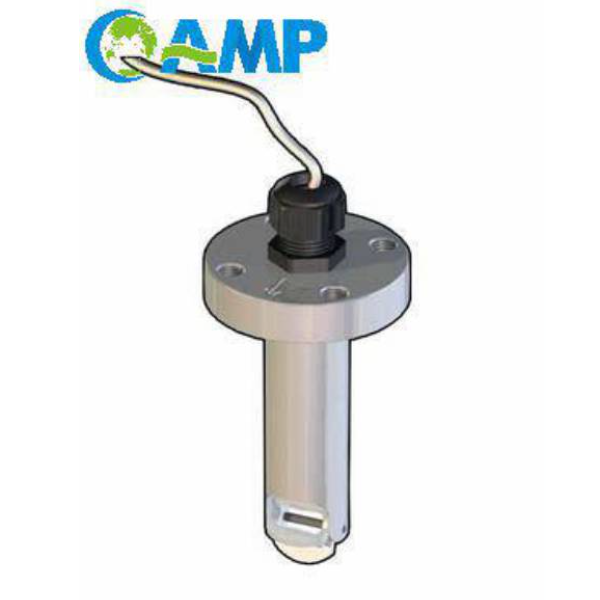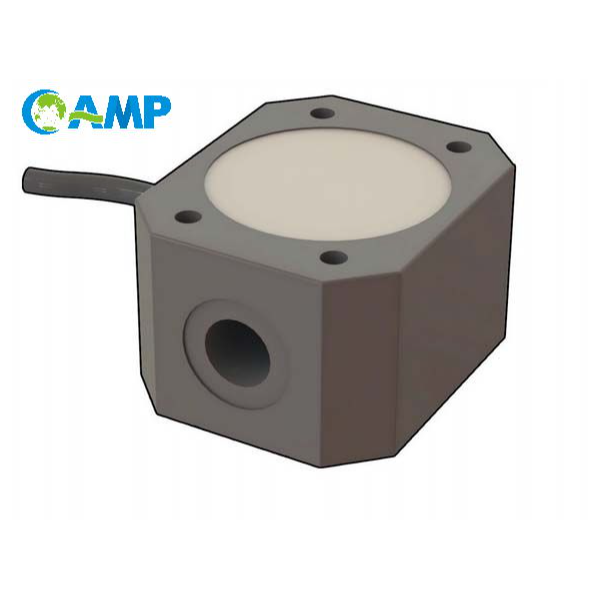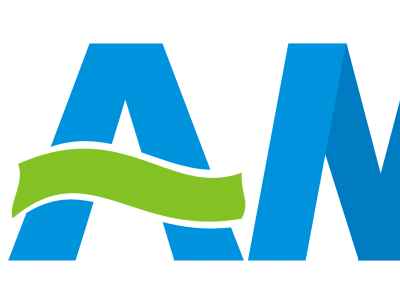-
 Chen Si
Hi there! Welcome to my shop. Let me know if you have any questions.
Chen Si
Hi there! Welcome to my shop. Let me know if you have any questions.
Your message has exceeded the limit.

Flow Sensor Types: A Guide to Flow Meters and Sensor Types
2025-10-17 15:53:57
Accurate flow measurement is essential in various sectors, such as wastewater treatment, chemical processing, and HVAC system management. The choice of the correct flow sensor or flow meter can lead to considerable influence on system efficiency, cost of operation, and performance in general. But, among the many flow sensors that exist and that are suitable for various applications and conditions, choosing one can be quite hard. This manual gives a detailed report of the types of flow sensors that are most common, their methods of operation, and their suitable application areas. In the end, you will have the knowledge required to assess and select the best flow sensor for your specific needs.
Introduction to Flow Sensors
Flow sensors are instruments intended to quantify the distribution of liquids or gases in a given system. Their function is based on the detection and flow rate measurement, which is usually specified in liters per minute (L/min) or cubic feet per minute (CFM). Some of the most frequently utilized flow sensors are still thermal, ultrasonic, electromagnetic, and turbine flow sensors types. Each one has its particular application dependent on its aspects such as fluid, temperature, and pressure. These devices play an irreplaceable role in production, healthcare, and environmental sectors by contributing to process efficiency, accuracy, and safety.
Overview of Flow Sensors
Flow sensors are the basic instruments which besides others ensure proper control of fluid dynamics in the respective systems. By giving the exact rate of flow measurement, they make it possible to monitor processes and thus, optimize them more easily. The mentioned precision together with the simplicity of the process will result in reduced waste, the overall system efficiency improvement, and being on the safe side concerning safety and regulatory standards. Furthermore, their adaptability implies that they could be utilized in different sorts of places, ranging from industrial pipelines to medical devices, thus playing an important role in many applications.
Importance of Understanding Flow Sensor Examples
A wide variety of flow sensors are available on the market nowadays, they can be grouped and characterized based on their principle of operation into several major types. These main categories consist of thermal mass flow sensors, electromagnetic flow meters, ultrasonic flow meters, and turbine flow sensors.
Thermal Mass Flow Sensors
Using thermal dispersion technology, thermal flow sensors ascertain the mass flow rate of fluids. They are perfect for processes that need accurate measurement of gases. For instance, in the semiconductor sector, thermal mass flow sensors give an accuracy of ±1% which is crucial in the gas flow control of chemical processes.
Electromagnetic Flow Meters
These meters work on the principle of Faraday’s law of electromagnetic induction and are suitable for conductive fluids. Their precision ranges are generally around ±0.2% to ±1% and are common in water treatment and chemical cosuming where they provide accurate volumetric flow measurements.
Ultrasonic Flow Meters
Using sound waves as a medium, ultrasonic flow meters measure the flow and are non-invasive, thus causing minimal disturbance to the flowing substance. This group of devices is widely used in the oil and gas industry, for instance, where the usage of sophisticated designs allows precision measurement of up to ±0.5% over large carriers even in unfavorable conditions.
Turbine Flow Meters
Employing a mechanical rotor assembly, turbine flow meters determine the amount of fluid passing through the device by the number of rotations the blades make under the flow. Accuracy levels of ±0.1% to ±1% are typical for these meters which makes them very popular in aerospace refueling and energy production projects.
Key Performance Data and Industry Trends
According to Global Market Insights, the flow meter industry was worth approximately $7.8 billion in 2022 and is expected to grow up to $11.5 billion by 2030 under the influence of IoT-based flow measurement system innovations, among others.
New-generation flow meters not only become more and more energy efficient but also include smart sensors which can transmit the data with a lag of as little as 30 seconds, thus facilitating making on-the-spot decisions in production environments.
It is important for stakeholders to follow and comprehend these advancements in technology as well as the different types of sensors available in the market so that they can optimize their systems performance and remain compliant with strict industry regulations.
What is a Flow Sensor?

A flow sensor is a gadget that tells you how fast the liquid or gas is going through the system. It does this by noticing changes in the pipeline's pressure, speed, or volume and then turning these signal changes into readable signals. Such sensors are very important in keeping track of and managing the flow in various applications, be it an industrial manufacturing process or a water management system.
Definition and Purpose of Flow Sensors
A flow sensor uses different methods to measure depending on the application and the exact needs of the system. The most used types are thermal, ultrasonic, electromagnetic, and turbine-like flow sensors. For instance, thermal flow sensors measure mass flow rates by using heat dissipation principles, while ultrasonic sensors use sound waves to find out the flow velocity. Electromagnetic sensors create a magnetic field and measure the flow by the voltage generated due to the fluid's movement. Turbine flow sensors, in contrast, rely on the rotation speed of a turbine wheel that is placed in the fluid stream.
Key Specifications and Performance Metrics
The performance of a flow sensor is defined by several essential parameters:
Accuracy: A percentage of the actual flow is usually given as accuracy, for instance, commercial flow sensors reach accuracy levels from ±0.5% to ±3%. For accuracy that is more than ±0.1%, the application would need to be high-precision, such as medical or scientific research.
Flow Range: Sensors come with specific flow rate ranges, for example, 0.2–10 L/min for small units or 10,000 GPM for large-scale industries.
Operating Temperature: Most sensors operate between -40°F and 250°F depending on their materials and applications.
Response Time: The response time of the sensor, generally in milliseconds, is essential for the capturing and controlling of data in real-time for dynamic systems.
Applications and Emerging Trends
Flow sensors are critical to various industries. For example, in water management, they are placed in the distribution networks to always keep an eye on the situation and be alerted in case of any leaks or if the delivery could be more efficient. In the medical area, flow sensors are a compulsory part of ventilators as they guarantee accurate air control for patients. The flow sensors are pipeline monitoring systems for the optimized transport of fuel and gas that exploit the energy sector.
The latest trends are combining smart technologies with conventional flow sensors. One such thing is IoT (Internet of Things) application which enables remote flow monitoring and diagnostics that deliver real-time data analytics and predictive maintenance. Current market studies indicate that the global flow sensor market, valued at $7.2 billion in 2023, will grow by 6.1% year-on-year because of the automation and industrial digitalization trends.
The latest flow sensors are being designed to have longer life, better accuracy, and versatility to adapt to many environments and applications.
Key Features of Flow Sensors
High Sensitivity and Accuracy
The progress of sensor technology is reflected in the gradual creation of flow sensors that are not only extremely sensitive but also very accurate. Modern sensors utilize state-of-the-art materials and microelectromechanical systems (MEMS) to detect even the slightest changes in flow rates with an error margin of ±0.1% at the most. That much precision is a must in sectors like pharmaceuticals, food and beverage, and oil and gas, since accurate measurements are crucial for process optimization.
IoT Integration
The inclusion of the IoT (IoT) has caused the flow sensor technology to flip data management and monitoring of the systems. The flow sensors that are made IoT-compatible can send real-time data to the major control systems, which means that remote monitoring and maintenance based on prediction are possible. A report by Statista in 2023 has predicted that the incorporation of IoT in the industrial sector will grow by 18.4% per year which will consequently result in the increased demand for connected flow sensor solutions.
Wide Operating Range
State-of-the-art flow sensors are made to work in different climatic conditions, from the very hot and cold to the very high and low pressure, or even in the presence of corrosive or hazardous substances. With a temperature range of -40°F to 500°F and a resistance to pressure above 1000 PSI, these sensors are fit for the most stringent industrial requirements of the aerospace and chemical sectors.
Energy Efficiency
The creation of energy-efficient flow sensors has become one of the prime objectives of sensor development. Furthermore, many sensors come equipped with low-power modes and self-calibrating functions which help to cut down total energy consumption. The aforementioned developments correspond with the global trends towards sustainability, as the industries are progressively working on meeting the regulatory and corporate requirements for the year 2030.
Customizable Solutions
The availability of customization is on the rise in order to satisfy the needs of different industries. As an example, the market of waste management and semiconductor require the flow solutions to be made from special materials or specific designs which are to be incorporated with the unique needs. A very recent study has shown that over 30% of the market is taken by custom-made sensors which are considered to be addressing niche requirements while still delivering an excellent performance.
The various technological advancements by the manufacturers are shifting the flow sensors' usage to unexplored areas, while the data integration capabilities are in sync with the Industry 4.0 standards.
How Flow Sensors Work
Flow sensors are devices that measure the rate of fluid—liquid or gas—passing through a certain point in a system and then transforming this measurement into an electrical signal for further analysis and monitoring. The major methods of operation are differential pressure, thermal dispersion, electromagnetic induction, and ultrasonic technology, each being suitable for specific applications. For example, differential pressure sensors apply Bernoulli’s equation, while thermal dispersion-based units determine flow rate by measuring the loss of heat from the heated sensor element.
Latest market research for the year 2023 points out that ultrasonic and electromagnetic flow sensors are going through a phase of significant increase, with a CAGR (compound annual growth rate) of about 6.5%. One of the main factors behind this trend is their accuracy, besides the fact that they do not need much maintenance and are capable of handling different types of fluids, even the corrosive ones. Furthermore, new ranks are being set in performance due to miniaturization, higher sensitivity, and wireless connectivity.
These sensors are crucial in various applications from medicine—where they control the exact amount of drug to be given—to industrial automation, thus guaranteeing the maximum efficiency of the system. As per a report by MarketsandMarkets the worldwide flow sensor market is anticipated to be worth $10.5 billion by 2028, which will be mainly due to the rising demand in water treatment, oil & gas, and smart manufacturing industries. These trends are a clear indication of the vital importance of flow sensors in the present day technological worlds.
Examples of Different Types of Flow Sensors

Many different flow sensors exist, each one adapted to specific application needs. For example, electromagnetic flow sensors can be referred to as the first type; they are the perfect choice when it comes to measuring conductive liquids. On the other hand, thermal mass flow sensors can also be considered as a second type that is in fact superior in monitoring gases based on measuring heat transfer. Moreover, ultrasonic flow sensors depend on sound waves for flow rate calculation; while turbine flow sensors work through the rotation of a component as the method of taking the fluid's velocity. It is only natural that each category of flow sensors has its own set of benefits that are dependent on the substance being measured and the conditions under which the operation takes place.
Differential Pressure Flow Sensor
Differential pressure flow sensors make use of the pressure drop across a restriction in the flow path to determine the flow rate. Such restrictions may include but are not limited to an orifice plate, a venturi tube, or a flow nozzle. It is through the release of this pressure that the flow rate is accurately measured, hence allowing very reliable measurements across a wide range of fluids. This sensor’s reliability, along with its versatility, allows it to find use in applications that call for precise monitoring of a fluid's flow under varying conditions. In addition to proper calibration, regular maintenance is also necessary for the sensors to maintain long-term accuracy and performance.
Thermal Flow Sensor
The thermal flow sensor is based on the principle of measuring heat transfer between two mediums and thereby the flow of one medium is calculated. In the process, the sensor heats an element in the flow path, and the fluid passing through the element changes its temperature. The heat lost by the element is an indicator of the flow rate. The method is very advantageous as it offers good precision in low flow measurement and it can be applied to both gases and liquids.
Turbine Flow Sensor
Flow measurement is done through a turbine flow sensor based on a rotor's motion within a fluid path. The fluid flow rotates the rotor with a speed proportional to the velocity of the fluid. Sensors pick up the rotational speed of the rotor and convert it into flow rate measurement. This type of sensor is dependable for medium to large flow rates in liquids and is recognized for its accuracy and reliability.
Vortex Flow Sensor
The principle behind a vortex flow sensor is the detection of the vortices formed when a liquid moves past a sensor’s obstruction. The number of these vortices occurring in a given time is directly related to the liquid's speed; hence, it is possible to find out the flow rate with a vortex meter. These meters are adaptable, suitable for a vast range of liquids, and work efficiently in high-temperature and high-pressure situations. They are widely employed in industries that need accurate measurement of clean liquids, gases, or steam.
Rotameter
A rotameter is a device that works on the principle of the variable area and is used as a flow measurement instrument. It comprises a tube that has a conically-shaped cross-section and a float within the tube that either rises or falls in accordance with the volume of liquid being supplied. The float's location in the tube indicates the flow rate, which can be read on a calibrated scale against the background of a light beam. The straightforwardness, dependability, and user-friendly nature of rotameters have made it one of the most commonly used measurement devices, as well as the availability of a direct visual indication of flow. They can measure the flow of gases and liquids in low to moderate pressure systems efficiently.
How to Choose the Right Flow Sensor

When selecting a flow sensor, I always take into account the characteristics of the fluid or gas. I consider pressure, temperature, viscosity, and conductivity, among others. Besides, I also look at the level of required accuracy, the flow range, and the operating environment compatibility. Furthermore, I pay attention to installation issues like pipe size and orientation, the required maintenance and the overall cost-effectiveness. By correlating these factors with the various sensor types' capabilities, I can come up with the best reasoned choice.
Things to take into account
The precision, reliability, and versatility of flow measurement systems have been greatly improved owing to recent advancements in sensor technology. For instance, electromagnetic flow meters with an accuracy of ±0.2% of the measured value are perfect for the applications involving conductive fluids. Ultrasonic flow meters, which are based on transformed sound waves telling the flow velocity, have made it even easier to work in low-pressure or high-temperature environments. The world's flow meter market is expected to grow as much as $11 billion through 2027 as per industry reports, with the main drivers being the need for better measurement solutions in water treatment, oil and gas, and chemical processing, among others.
Furthermore, the use of IoT technology has allowed for constant monitoring and data analysis, leading to improved maintenance and operational efficiency. For instance, smart flow meters are now capable of wireless data transmission, remote monitoring of system performance, and even predicting maintenance needs through the use of machine learning algorithms. The trend towards intelligent systems not only lowers the cost of maintenance but also increases the overall product output and cost control.
The aforementioned improvements highlight the necessity of being aware of the latest technological trends when choosing a flow sensor since they have an immediate effect on the efficiency and effectiveness of measurement systems in dynamic and demanding environments.
Matching Sensors to Applications
The selection of a flow sensor has to be made considering quite a number of factors such as the environment where the sensor will operate, type of fluid flowing through it, and the express application demands. For example, if the industrial process is using corrosive chemicals, then robust sensors made of corrosion-resistant materials like stainless steel or PTFE coatings should be installed. In contrast, sensors used in the food and beverage industry need to meet stringent cleanliness and safety standards, for example, FDA approval, to be certain of their hygiene.
Recent market research data suggest a very strong growth trend in the flow sensor market, with a 6.5% compound annual growth rate (CAGR) from 2023 to 2030 (source: market research reports). This development is mainly due to IoT integration and the proliferation of smart monitoring systems, especially in water, energy, and health care among other sectors. The smart sensors that come with wireless communication capability such as Bluetooth or LoRaWAN, are being sought after, since they have the unique capacity to deliver real-time data.
Besides that, precision and flow range are very important features to consider. For instance, ultrasonic flow sensors can boast accuracies of ±1% or even better and thereby become the first choice for their very particular applications. While Variable Area (VA) flow meters still offer a cost-effective option in situations where moderate accuracy is tolerable. The evolving technology also allows conducting multi-parameter measurements whereby at times a single sensor will be able to measure flow rate, pressure, and fluid temperature all at once, thus, simplifying and reducing the need for equipment and operation.
Propelling the mouse in a dark school might easily frighten it. Users should also take advantage of advanced analytics tools that are very well integrated with these sensors so that maintenance can be predicted and control systems can be adjusted. By bringing together application-specific needs with current technology trends, companies can achieve higher productivity, and at the same time, comply with industry standards.
Conclusion
In short, I carefully select the sensors after deeply considering and analyzing the application's specific requirements, such as environmental conditions, performance criteria, and installation limitations, thus guaranteeing the highest possible accuracy and reliability for the given purpose.
Summary of Flow Sensor Importance
Flow sensors are vital in the process of correctly measuring fluid flow rates, thus ensuring the efficiency and reliability of the whole system. Their role is mainly to control the operations, to make the best use of the resources, and to avoid problems that might be caused by the irregularity of the flow. The choice of a flow sensor has a direct influence on the performance; thus, the presence of the right ones in the flow areas of the industries such as manufacturing, water management, and energy generation is a must.
Invitation to Discover Flow Sensor Possibilities
It is very important to know the type of fluid that is going to be measured, the needed precision, the flow range, and the working conditions when you are at the flow sensor selection stage. If the fluids are gases or clean liquids, ultrasonic or turbine flow sensors are the likely options. However, for more demanding situations with viscous or with fluids containing particulate matter, magnetic or coriolis flow sensors would be the right ones. Always check if the sensor's material is compatible with the fluid to avoid rusting or breakage, and evaluate if the device offers the required linkage with the existing system.
Tags: What is an example of a flow sensor, flow sensor


